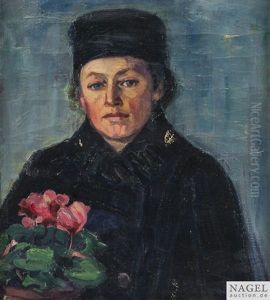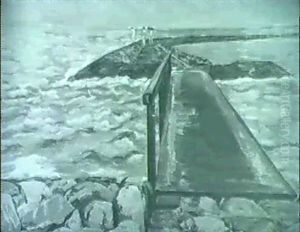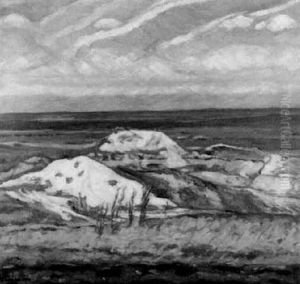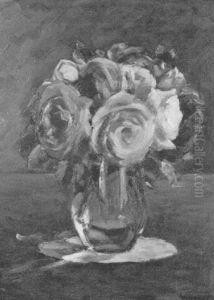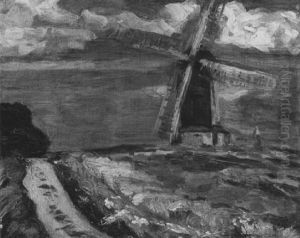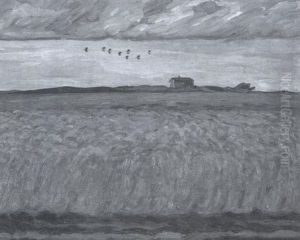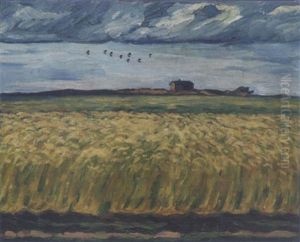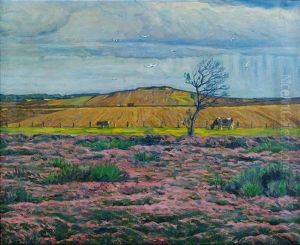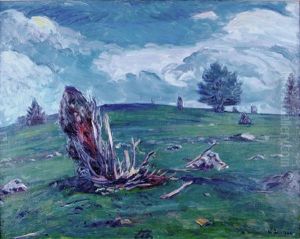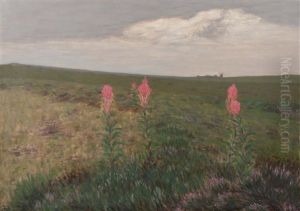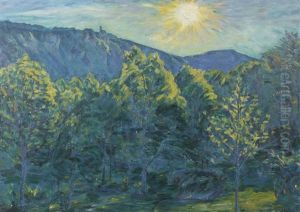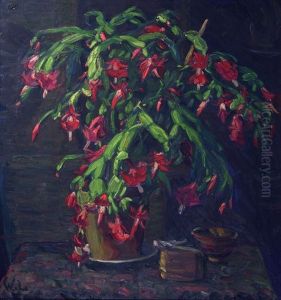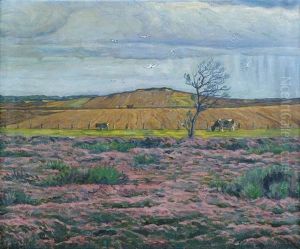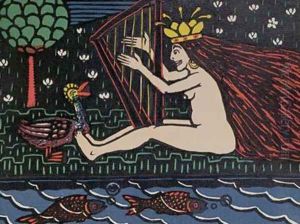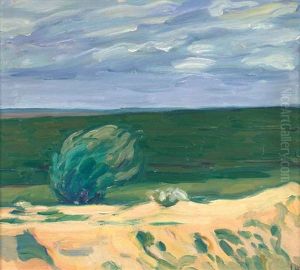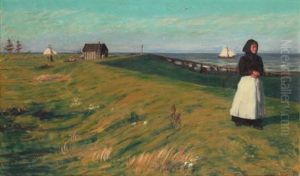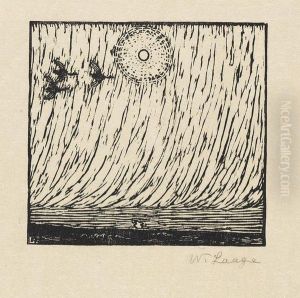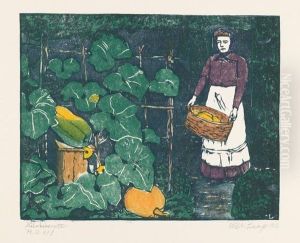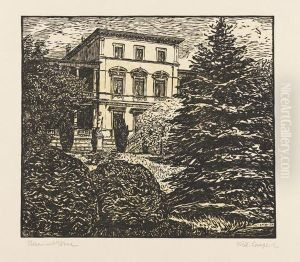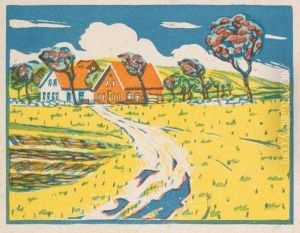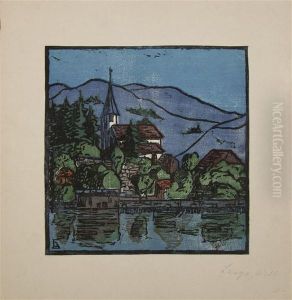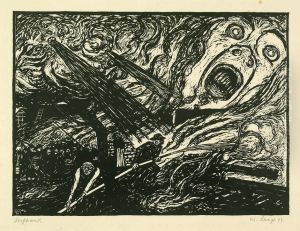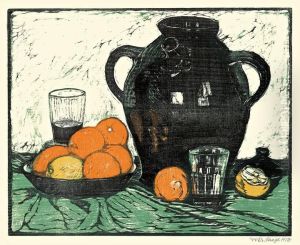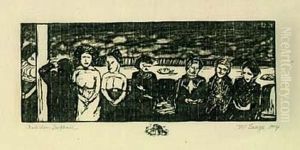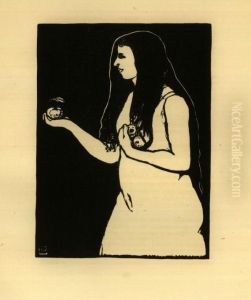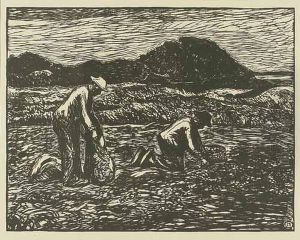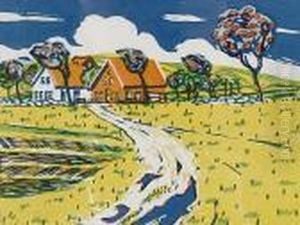Wilhelm Laage Paintings
Wilhelm Laage was a distinguished German artist, known primarily for his expertise in woodcutting. Born on September 7, 1868, in Rostock, Germany, Laage grew to be a pivotal figure in the art nouveau and expressionist movements that swept through European art in the late 19th and early 20th centuries. His work is characterized by bold, dynamic forms and a distinctive use of color and shadow, which set his woodcuts apart from those of his contemporaries.
Laage received his artistic training at the Academy of Fine Arts in Karlsruhe, where he was significantly influenced by the Jugendstil movement, the German version of Art Nouveau. This influence is evident in the fluid lines and organic forms that appear in his early works. However, as his career progressed, Laage's style evolved to incorporate the more expressive and emotive elements of Expressionism, reflecting the tumultuous social and political environment of early 20th century Germany.
Throughout his career, Laage was an avid experimenter with the woodcut medium, pushing the boundaries of what could be achieved with this technique. He is perhaps best known for his landscape and urban scene woodcuts, which are marked by their intricate detail and the ability to convey mood and atmosphere. Laage's work during this period reflects a deep engagement with the natural world, as well as an acute observation of the urban environment.
In addition to his artistic pursuits, Wilhelm Laage was also a dedicated educator, teaching at various institutions and sharing his passion for woodcutting with a new generation of artists. His influence on the German art scene of his time was significant, not only through his own creations but also through his mentorship of younger artists.
Wilhelm Laage's contributions to art were cut short by his untimely death on November 30, 1930, in Hamburg, Germany. Despite his relatively brief career, Laage's work left a lasting impact on the development of woodcutting as an art form and remains celebrated for its innovation and beauty. Today, his pieces are held in high regard and can be found in numerous art collections and museums around the world.
